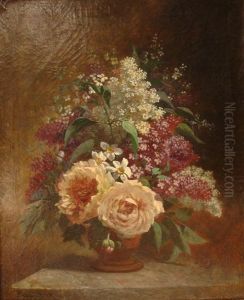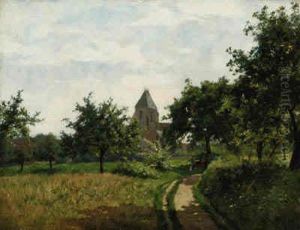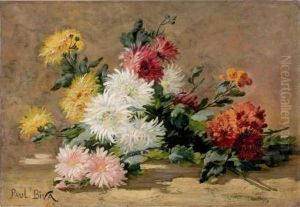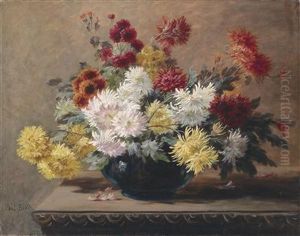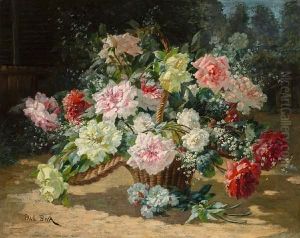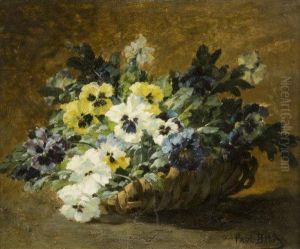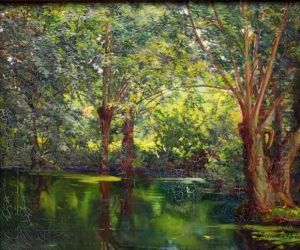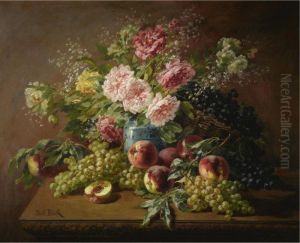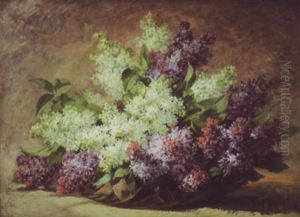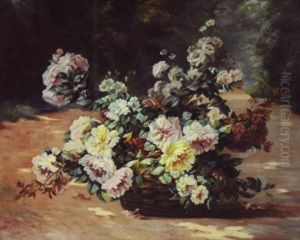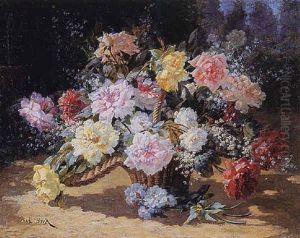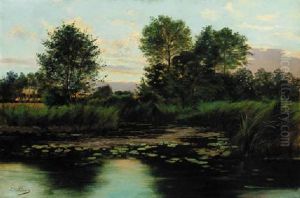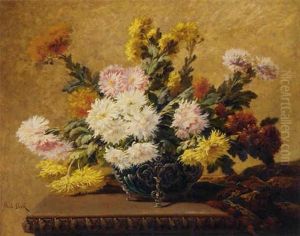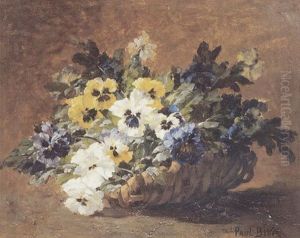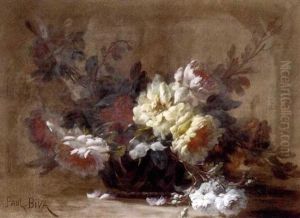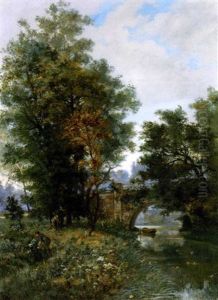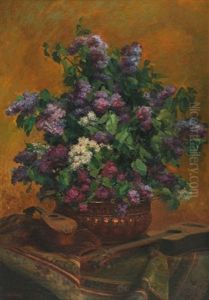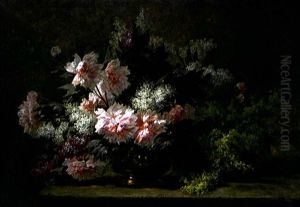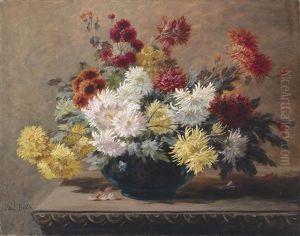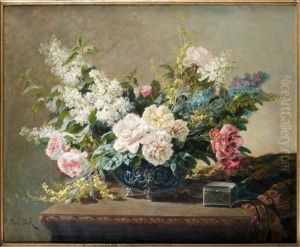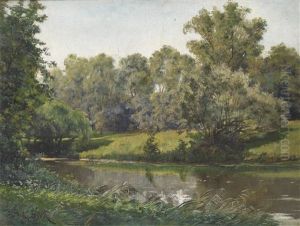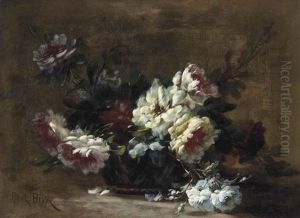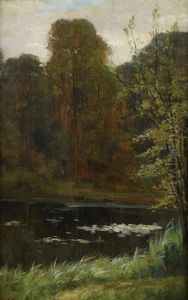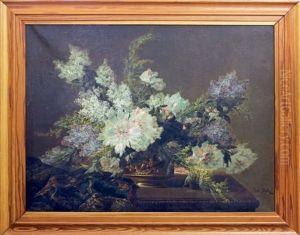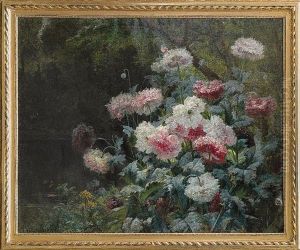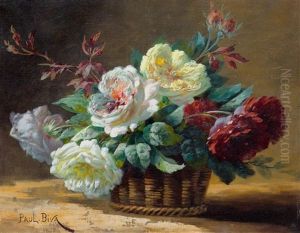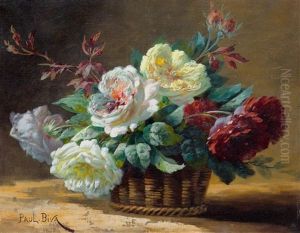Paul Biva Paintings
Paul Biva was a French naturalist painter born in Paris in 1851. He was part of the Biva family, which included several artists, most notably his brother Henri Biva, who was also a well-known painter of his time. Paul Biva's works are characterized by a meticulous attention to detail and a dedication to capturing the lushness and variety of plant life, which aligns with the naturalist aesthetic of the late 19th century.
Paul Biva's affection for the natural world was evident from the outset of his artistic career. He studied at the École des Beaux-Arts in Paris and was a student of the famous academic painter Alexandre Cabanel. This training would have provided him with a rigorous grounding in the techniques of painting, which he later applied to his nature studies. Throughout his career, Biva exhibited regularly at the Paris Salon, the official art exhibition of the Académie des Beaux-Arts in Paris.
Biva's work often focused on still-life compositions of flowers and gardens, capturing the vibrancy and diversity of the flora. His paintings are notable for their realism and the intensity of their color, which he achieved through careful layering and glazing techniques. This approach allowed him to render the effects of light and atmosphere with a high degree of precision.
Although not as widely recognized today as some of his contemporaries, Paul Biva's work enjoyed considerable acclaim during his lifetime. His paintings appealed to the bourgeois clientele of the period, who appreciated his ability to depict the beauty of nature in a realistic yet poetic manner. Biva's paintings can be seen as part of the broader 19th-century interest in the natural world, which was also reflected in the writings of naturalists and the popular hobby of collecting and studying plants.
Paul Biva's life was relatively short; he died in 1900 at the age of 49. Despite his early death, he left behind a body of work that continues to be appreciated for its contribution to the naturalist movement in art. His paintings are held in various private collections and have been exhibited in galleries and museums, offering a glimpse into the rich tradition of French still-life painting at the end of the 19th century.
